What to Know About Sargassum in the Dominican Republic
Learn what sargassum is, where it shows up, and when to expect it, how resorts keep beaches clean, tips, and alternatives for a great Dominican Republic trip.
PRACTICAL INFO & RESOURCES
10/28/20258 min read
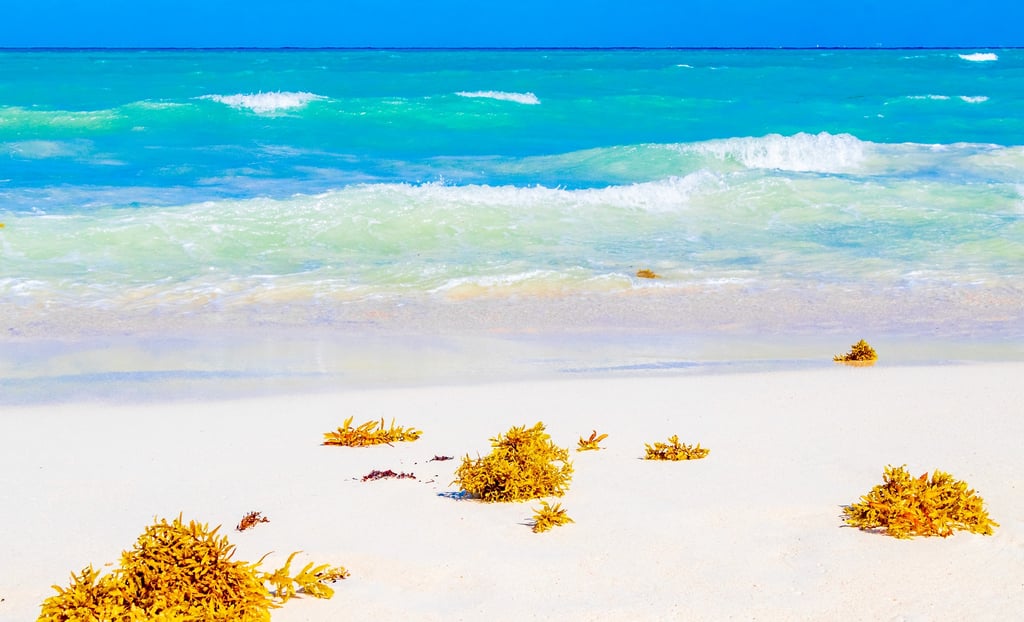

If you're dreaming of sunny beaches and turquoise water in the Dominican Republic, you might have heard about sargassum. It’s a type of seaweed that sometimes washes up along the shore. While it’s a natural part of the ocean and helps support marine life, too much of it can affect how the beach looks and smells.
This guide will help you understand what sargassum is, when and where it usually shows up, and how you can still enjoy your trip even during seaweed season. With a little planning, you can make the most of your beach vacation.
What Is Sargassum?
Sargassum is a naturally floating seaweed found mostly in the Atlantic Ocean and the Caribbean Sea. It often gathers in large patches that drift with the currents. While it's completely normal in the ocean, too much of it can pile up on the beach, creating an unpleasant look and smell. Although it's safe to be near, the buildup can make beach areas less enjoyable for swimming, walking, and yes, even snapping those perfect Instagram photos.
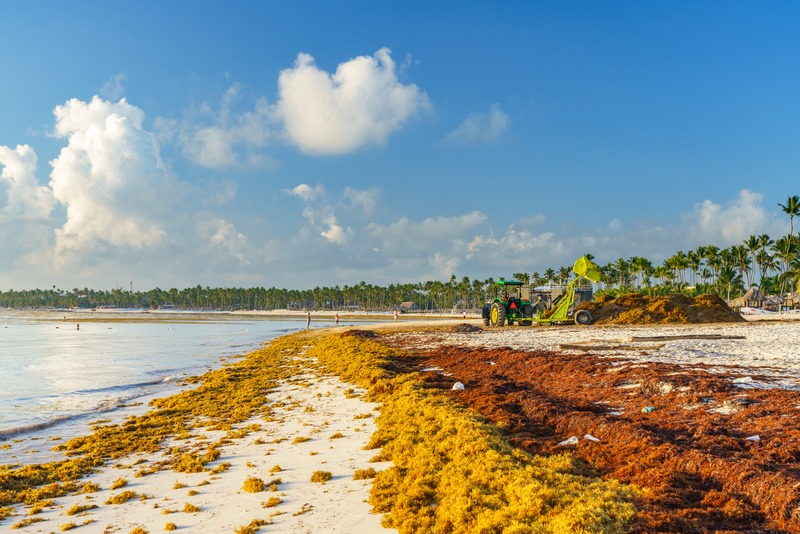

What Should You Know About Sargassum?
Before we talk about where and when it shows up, here are a few basics about sargassum:
It's a Floating Habitat for Ocean Life
Sargassum is a type of seaweed that floats on the ocean’s surface. It creates a safe home for fish, crabs, shrimp, and baby sea turtles. It’s like a small moving island that helps marine life grow and survive.
It’s Been Around for Centuries
Sargassum has been floating in the Atlantic Ocean for a long time. Even during his voyage in 1492, Christopher Columbus saw large patches of it in what is now called the Sargasso Sea.
It Helps Make Oxygen
Like other plants, sargassum uses sunlight to make energy through photosynthesis. This process also produces oxygen, which helps keep ocean life healthy.
Sargassum Blooms Are Getting Bigger
In recent years, massive amounts of sargassum have started appearing more often. These huge “blooms” stretch across the Atlantic and into the Caribbean. Experts believe it’s caused by warmer ocean water, river pollution, and wind patterns.
It’s Not Dangerous, But It Can Smell Bad
Sargassum in the ocean is harmless. But when too much of it washes onto the beach and starts to rot, it can release a gas that smells like rotten eggs. This can cause mild irritation for some people, especially those with asthma or allergies.
It’s a Big Cleanup Job
Some beaches in the Dominican Republic and other Caribbean islands spend a lot of money and time removing sargassum. It can hurt tourism if the seaweed isn’t cleaned up regularly.
Sargassum Can Be Recycled
Instead of throwing it away, some places use sargassum to make eco-friendly products. It can be turned into fertilizer, animal feed, bioplastics, biofuel, and even building bricks.
It Helps the Planet
Sargassum also captures carbon dioxide from the air. When it sinks to the bottom of the ocean, it stores this carbon naturally, helping reduce climate change effects.
When Can You Expect Sargassum in the Dominican Republic?
Sargassum season typically runs from March to November, peaking in the summer months. During this time, warmer ocean currents and nutrient-rich waters encourage the growth of this seaweed, leading to increased amounts along Caribbean coastlines.
The winter months (December to February) are usually free of sargassum, making it the ideal time for beach lovers who want picture-perfect shores without any interruptions.
Where Is Sargassum Most Common in the Dominican Republic?
Sargassum appears most often along the east and northeast coasts of the Dominican Republic, carried by ocean currents from the Atlantic. The south coast, which faces the Caribbean Sea, usually stays clear throughout the year. Beaches near the capital, Santo Domingo, can occasionally be affected by seaweed after strong winds or heavy rainfall.
Below you’ll find how each region of the country is affected, from the east, where sargassum is most common to the north and southwest where the water usually stays clear.
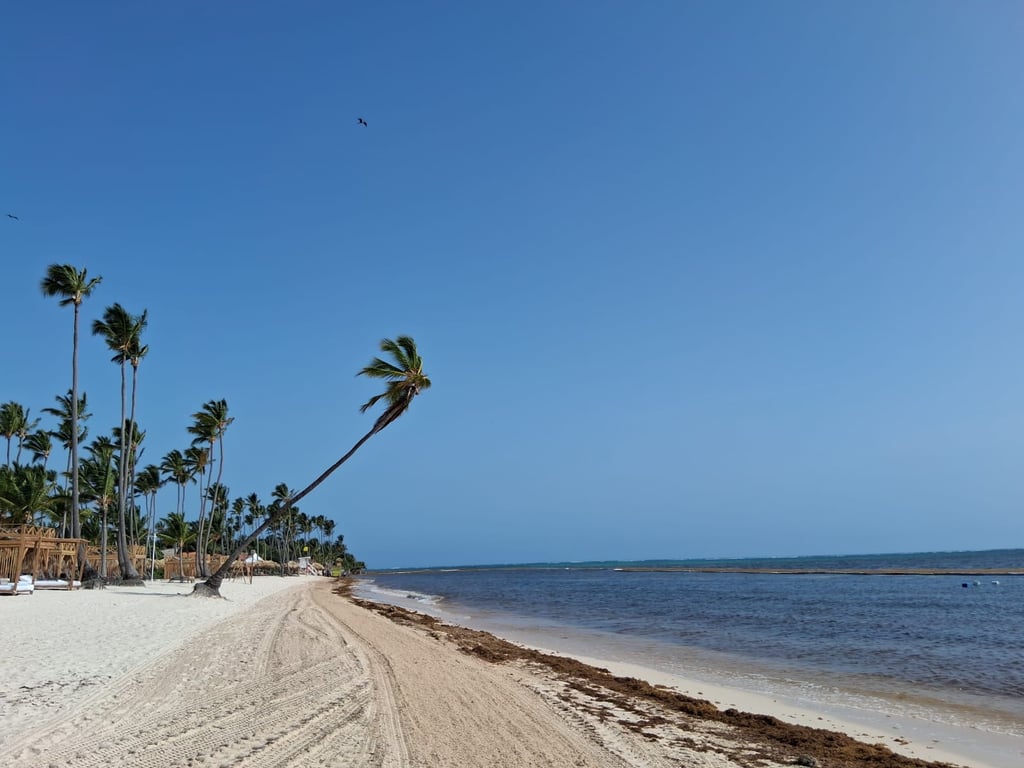

East Coast – Punta Cana, Bávaro, Cap Cana, Uvero Alto, and Macao
This region receives the most sargassum because it faces the open Atlantic. Punta Cana and Bávaro often experience the heaviest accumulation, while Cabeza de Toro and Arena Gorda are usually the first to see it arrive. Cap Cana and Uvero Alto vary depending on the wind and tide, and on calm days, the water can be completely clear. Macao Beach is naturally more protected and often stays clean even during summer, making it one of the best nearby options for a beach day. You can learn how to visit it and what to do there on the Macao Beach page.
If you’re booking a resort in this region, take a moment to read recent reviews on Booking.com to see how each hotel manages seaweed cleanup and beach maintenance.
Northeast Coast – Miches and Samaná
The northeast coast has mixed conditions. Around Miches, beaches such as Costa Esmeralda may see light seaweed but generally much less than Punta Cana. In Samaná, beaches like Las Terrenas and El Portillo can have sargassum during the summer months, while Playa Rincón and Las Galeras often stay clear thanks to their protected location surrounded by hills and calm bays.
South Coast – Bayahibe and La Romana
The south coast is the most reliable area for clear, calm water all year. Bayahibe and Dominicus Beach are known for their turquoise color and great swimming conditions. This area is also the starting point for boat trips to Saona Island and Catalina Island, both known for bright, clear water and clean beaches. You can explore them further on the Saona Island page and Catalina Island page.
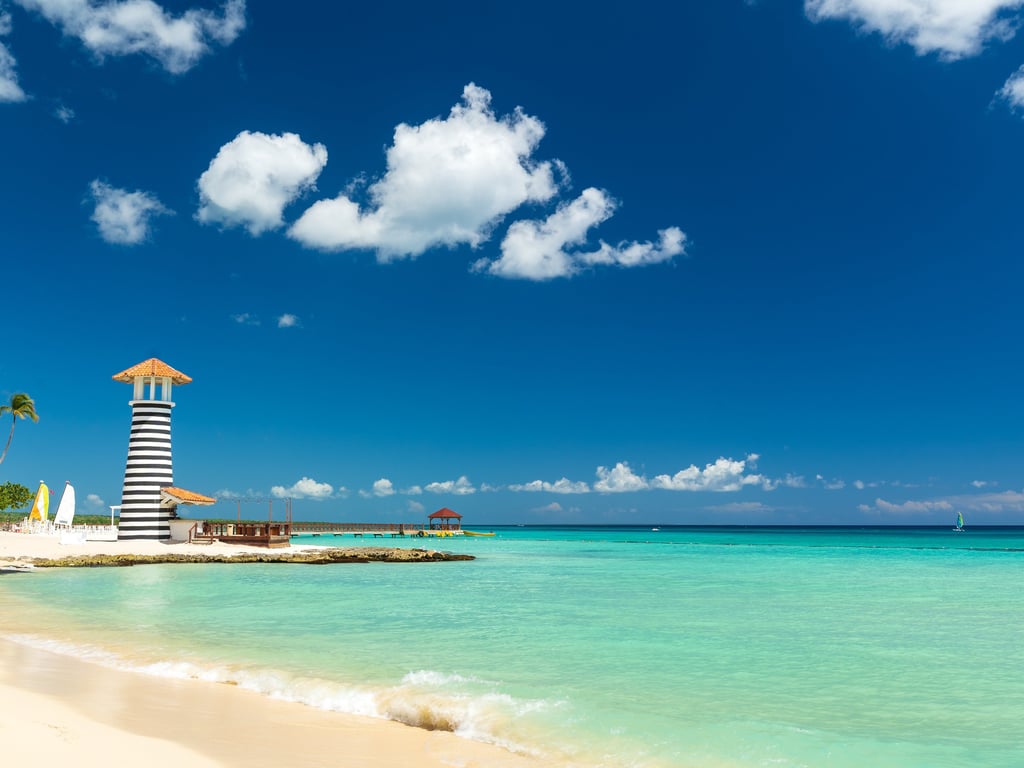

Santo Domingo Region – Boca Chica and Juan Dolio
Beaches near Santo Domingo, such as Boca Chica and Juan Dolio, face the Caribbean Sea and are generally calmer than those on the Atlantic side. Still, after storms or changes in ocean currents, seaweed can sometimes wash ashore. Local teams work hard to keep these beaches clean, and conditions can change quickly depending on the weather.
Southwest Coast – Barahona and Pedernales (Cabo Rojo)
The southwest coast also faces the Caribbean Sea, and it’s one of the cleanest and most naturally beautiful parts of the country. Beaches like Bahía de las Águilas, Los Patos, and Playa San Rafael are known for their clear water and dramatic scenery. Because of their location far from the Atlantic currents, these beaches rarely see sargassum. This region is perfect if you enjoy quiet landscapes, mountain views, and untouched coastal scenery.
If you’re planning to stay here, compare eco-lodges and boutique hotels in this region on Booking.com.
North Coast – Puerto Plata, Sosúa, Cabarete, Punta Rucia, and Montecristi
The north coast faces the Atlantic but receives much lighter amounts of sargassum than the east. Puerto Plata and Sosúa usually have clear water suitable for swimming, while Cabarete, known for kitesurfing, only occasionally sees small floating patches. Further west, Punta Rucia and Montecristi stay almost entirely free of sargassum because of their coral reefs and sheltered position. These beaches are calm and shallow, perfect for snorkeling and boat trips to Cayo Arena, famous for its crystal-clear water even during the summer.
How Do Resorts Handle Sargassum?
The good news is that many resorts in the Dominican Republic take active steps to manage sargassum and keep their beachfronts clean and guest-friendly. Here’s how they do it:
Daily Beach Cleaning
Most resorts use early morning cleaning crews to rake, collect, and remove seaweed before guests head to the beach. This routine helps maintain a clean, inviting shoreline throughout the day.
Specialized Machinery
Some larger resorts and hotels also use beach cleaning machines and tractors designed to collect seaweed quickly and efficiently, especially after heavy overnight buildup. This allows them to cover wide areas faster than with manual labor alone.
Floating Barriers at Sea
In areas with frequent sargassum, several resorts have installed floating barriers or seaweed containment booms in the water. These help block or redirect large mats of sargassum before they reach the shore.
Resort Pools and Other Amenities
Even if there’s some seaweed on the beach, you can still enjoy your vacation. Resorts offer beautiful pools, jacuzzis, outdoor bars, spa services, and daily entertainment. Staff are always ready to help and make sure your stay is relaxing and fun.
And don’t forget, the Dominican Republic is known for its warm, sunny weather almost every day of the year, so you’ll still have plenty of chances to enjoy the outdoors.
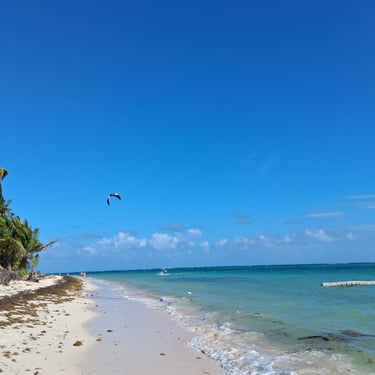
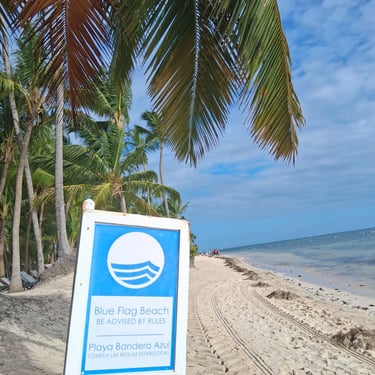
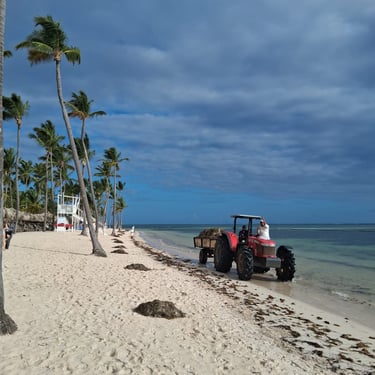
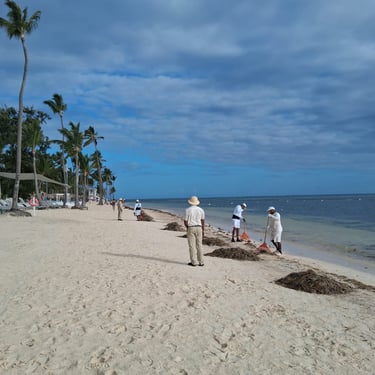
What Can You Do If There’s Sargassum During Your Trip?
Even if seaweed shows up, your Dominican Republic trip can still be amazing. Conditions often change from one day to the next, and with a little flexibility, you’ll always find something great to do. Here’s how to enjoy your vacation even when the beach isn’t perfect.
Check Conditions Daily
Sargassum moves with the wind and tide, so one beach might be covered in the morning and clear by afternoon. Before heading out, take a quick look at Sargassum Monitoring or check the Dominican Republic Sargassum Seaweed Reports group on Facebook for real-time photos.
Explore or Walk to Clearer Spots
If your beach has seaweed, try walking a bit along the shore before giving up. Sometimes, just a few meters further, the water turns clear and calm again. A small change in current or wind can make a big difference.
When the sea isn’t ideal, it’s also the perfect time for an excursion. Spend the day on Saona Island or Catalina Island, go ziplining in the jungle, or take a culture and history tour in Santo Domingo. Inland spots like Hoyo Azul in Cap Cana or 27 Waterfalls near Puerto Plata are incredible and completely seaweed-free.
You can find the best tours and day trips on Viator.Enjoy Resort Time and Be Ready for Anything
If the sea isn’t ideal, enjoy what your resort offers. Spend the day at the pool, order your favorite drink, or relax with a spa treatment. Many hotels organize yoga, dance, or cooking activities, so check the daily schedule and make it a fun day on-site.
Having the right essentials helps too. Water shoes make walking along the shore easier, and snorkeling gear lets you swim out to clear water. You can find useful ideas and must-haves in our Packing List for the Dominican Republic.Visit Early or Late for the Best Beach Time
If there’s seaweed, mornings and late afternoons are usually better for swimming and photos. Avoid the middle of the day when it’s warmer and the smell can be stronger. Resorts often clean again later, so checking back before sunset can give you a much clearer beach.
Keep an Open Mind and Enjoy Your Trip
Seaweed is part of nature, but it doesn’t define your vacation. Some of the best moments happen when you try something different: a day trip, a local tour, or simply relaxing somewhere new. The Dominican Republic is full of beautiful places to explore, so keep an open mind and enjoy it all.
Seaweed or not, the Dominican Republic always delivers amazing days by the ocean. Go explore, swim, taste, and see more of the island while you’re here. Keep planning your trip with our guides to the Best Beaches in the Dominican Republic, Watersports, and Beach Safety Tips to enjoy every moment by the sea.
Explore the Dominican Republic with DR Simplified – Your Viator Travel Shop
Find the best excursions, cultural experiences, and adventure tours across the Dominican Republic. From sunny beaches and waterfalls to charming towns and outdoor activities, our Viator shop makes planning your trip simple and fun. Start enjoying the best of the island.
Terms and Conditions © All rights reserved 2025
Affiliate Disclaimer
Some links on DR Simplified are affiliate links. If you make a purchase or booking, we may earn a commission at no extra cost to you. Thanks for your support!




